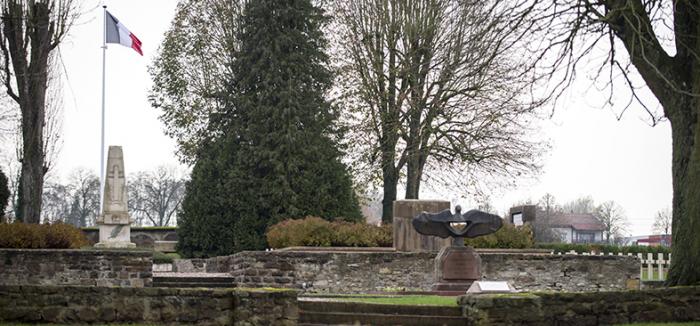
La nécropole nationale de Dieuze. © ECPAD
Pour accéder au panneau d'information de la nécropole, cliquer ici 
Built in 1914 by the German army at the end of the Battle of Dieuze, the Dieuze national cemetery holds the bodies of soldiers killed during the two world wars. Further developed in 1924-1926 and then again in 1964, this cemetery holds the remains exhumed from the cemeteries of Meurthe-et-Moselle and Vosges.
From the Great War, there are 821 Romanians, 263 Frenchmen, 239 of whom lie in two ossuaries, 122 Germans in two ossuaries, eight Poles and seven Russians.
From the Second World War, 222 Poles and five Frenchmen are buried there.
A monument honouring the memory of the Romanian soldiers killed on French soil in 1914-1918 has been erected there. This memorial was unveiled in 1998 by the Romanian Ministry of Defence. Standing on a plinth made of Vosges sandstone, this structure, given as a gift by Romania, is a reproduction of a monument in Bucharest. The monument contains earth from the ten French cemeteries in Romania.